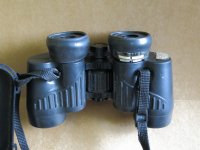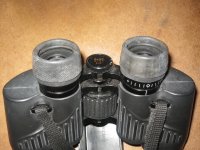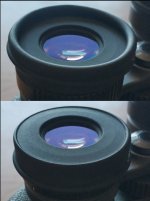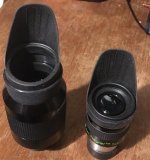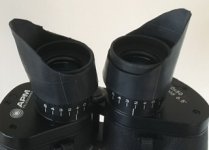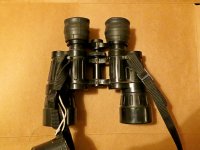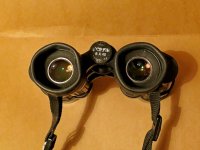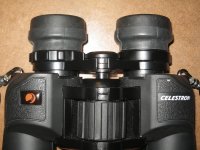Imans66
I understand you want simply to bulk out the eyecups.
Here are step by step instructions for ordinary eyecups -- Constant diameter, no lumps and bumps:
You select a length of inner tube with a diameter that looks to fit the eyecups with just a little bit of stretch to hold it gripping tight.
For each eyecup, you cut a section measuring just over twice the height of the eyecup. You don't cut twice the exact height because when material turns back on itself, the turn consumes a little bit of length. Also you may want the doubled over edge to protrude a little to offer you greater comfort.
You sleeve the section over the eyecup.
You turn the upper half of the section which protrudes above the eyecup back over the lower half. You will have to stretch the upper section. Be careful not to damage the binocular when doing so.
If a single doubled over section does not bulk out the eyecup sufficiently, you add sections. They can be single thickness sections, or doubled over sections.
However, since single thickness sections have a 'hard' edge, it is better not to use them for the outermost section. Instead use them, slightly recessed, only for the inner sections.
Say if I have misunderstood you!
The language of 'sections' and 'diameters' can be confusing.
Cyclists talk of 32mm section tyres, rather than 32mm diameter tyres. It could be because 32mm is a width measurement. Inner tubes in turn are not specified by diameter, but by the section of tyre they are intended to fit. But should you come to cut up an inner tube, then you cut it by length also as a matter of terminology into 'sections'.
Stephen





